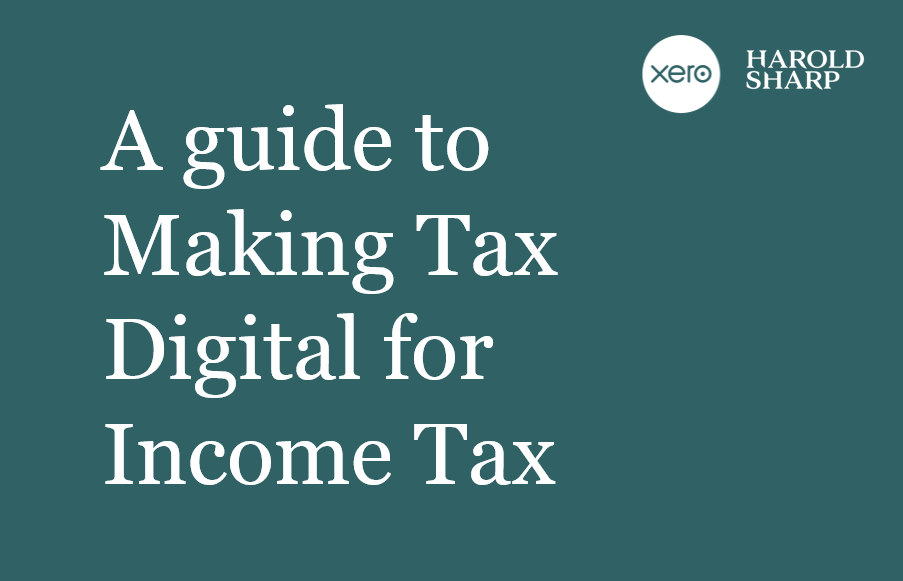MTD for Landlords
Making Tax Digital (MTD) will start to affect those who pay income tax via self-assessment in April 2026. This is being called MTD for ITSA and will affect Landlords with gross rentals in excess of £50k.
What does MTD for ITSA mean for Landlords?
From 6 April 2026, those Landlords affected will need to use MTD compliant software to maintain digital records of income and expenses. Maintaining paper records will no longer meet tax legislation requirements.
Landlords will be required to submit a digital summary of income and expenses to HMRC via MTD compliant software on a quarterly basis.
In real terms, this means that by 5 August 2026, you will need to have submitted your first quarterly summary to HMRC (to cover the period 6 April – 5 July 2026). Your tax, however, will still be paid via self-assessment as usual. You will no longer be required to report this income on a self-assessment tax return. Instead, an End Of Period Statement (EOPS) and final declaration will need to be submitted by 31 January following the tax year. This will be done via the MTD compliant software. A Final Declaration will also need to be made, to include other sources of taxable income such as savings and investment income.
What is a quarterly submission?
Your quarterly submission summarises your income and expenditure for each quarterly period. These updates can be quickly pulled together in your cloud-based accounting software, providing you keep your digital records up to date. You can submit these updates yourself or you can authorise your accountant/bookkeeper to do so. Contact us for more information.
What is an End of Period Statement?
The End of Period Statement (EOPS) is an annual submission that must be completed by 31 January of the following tax year. It must be completed for each source of business income. Any accounting adjustments and reliefs must be processed prior to completing the EOPS. Approved software will pull your EOPS together for you.
What is a Final Declaration?
You will need to make a single final declaration by 31 January following the tax year. It will bring together all data including business and non-business income needed to finalise your tax position and calculate your tax liability. The final declaration is the MTD equivalent of the self-assessment tax return. It can be prepared by your accountant but you will need to sign it to confirm that the updates that are provided are accurate.
Benefits of early adoption
At Harold Sharp we have already been through the first phase of MTD with our VAT registered clients. Drawing on our experience, we know that MTD will benefit our Landlords in the following ways:
-
- Information can be accessed anytime/anywhere
- Digital records are easily retrieved and do not require physical storage
- Easier visibility to help manage your business more effectively
- More regular contact with your accountant
- Review profits on a quarterly basis and budget for future liabilities

Get MTD compliant today
We are passionate about the benefits of digital record keeping, which is why we’ve designed a number of early adoption packages using specialist software for Landlords (including more complex landlord structures e.g. HMOs, joint ownerships, limited companies) who want to invest in an effective way to manage their business.
Fancy seeing this in action? Contact Ryan Alderson for a demo.
MTD timeline
Making Tax Digital for VAT
Making Tax Digital for Income Tax
April 2026
Self-employed and partnership businesses and landlords with annual business or property income above £50,000 will need to follow the rules for MTD for Income Tax from their next accounting period starting on or after 6 April 2026.
What does this mean? When MTD for income tax becomes mandatory, affected businesses will be required to:
-
- maintain their accounting records digitally in a software product or spreadsheet (see above re MTD compliant software / bridging solution). Maintaining paper records will no longer meet the requirements of the tax legislation; and
- submit information quarterly to HMRC and finalise their tax position after the end of the tax year. The quarterly updates and end of year reports will need to made using a functional compatible software product that can access HMRC’s API (Application Program Interfaces) platform.
Self-employed businesses or landlords currently have the option to voluntarily opt-in to keeping digital records and submitting Income Tax updates to HMRC, instead of filing a Self-Assessment tax return, ahead of the requirement which will come into force in April 2026.
Making Tax Digital for Corporation Tax
Let’s get digital
Start your MTD ITSA journey today and start benefiting from digital record keeping.
Call us on 0161 905 1616 or request a callback by filling the form below, and one of our team will be in touch within 48 hours.
Fintech Friday blog
Digital advisory: Is there an app for my industry?
The short answer is yes. But there’s no ‘one size fits all’ solution. That’s where we, as your digital advisors, can really add value. In previous...
Small changes for big results
Whether it’s the start of a new calendar year or financial year, the beginning of the year is always a good time to implement changes and reflect on...
The Power of Outsourcing
For the past couple of years we’ve been blogging relentlessly about the benefits of cloud accounting, all the different areas it can help...




